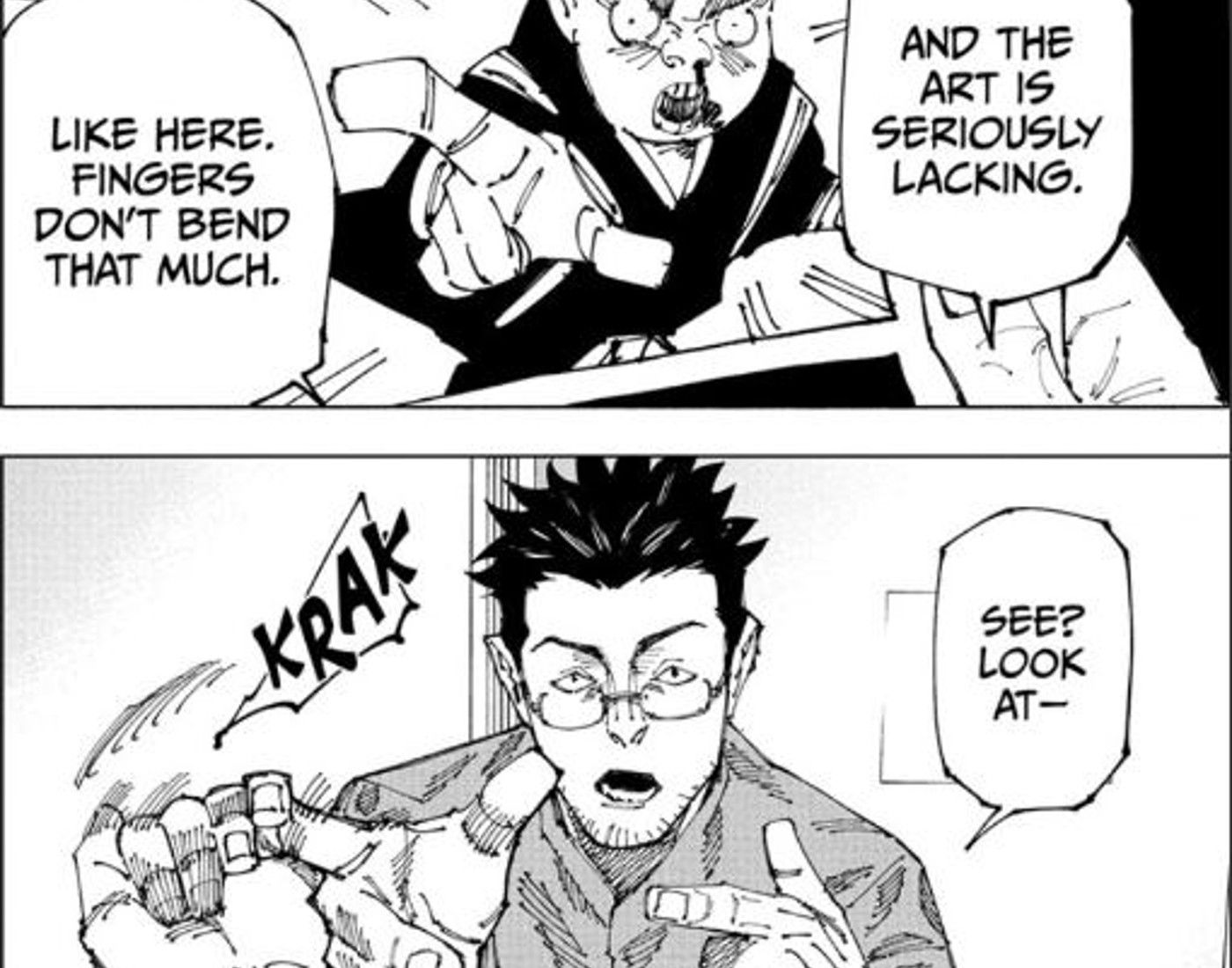Warning, contains spoilers for Jujutsu Kaisen chapter 181!
In its latest chapter, Jujutsu Kaisen responded to its most common critiques in a perfect way. While the manga is one of the most popular series currently serialized in Shonen Jump, it has also attracted its fair share of critics. These detractors have raised many different critiques, but the author of the series has responded to all of them in one moment.
Jujutsu Kaisen is a manga by Gege Akutami following a group of Jujutsu sorcerers as they fight the malicious curses that plague human society. The series has been praised for its high-octane action sequences and breakneck pacing, but many fault it for its barebones and quirky art style. A particular sticking point for many of these critics is the way that Gege draws fingers, which are often blocky and angled in strange ways. Other detractors dislike the series for its gory nature. Though its battles are often innovative, Jujutsu Kaisen often makes even basic powers like healing disgusting. Another sticking point is the constantly changing tone between comedy and horror. While fans of the series are quick to defend these points, discussing how well the art style lends itself to the series’ many gritty fights and how the shifting tone means the series never wallows in its more depressing moments for too long, in the latest chapter Gege revealed that he can defend the series himself.
In chapter 181 of the series, Gege introduces a new character, Charles Bernard. Taking a cue from the failed manga Ayashimon, Charles Bernard is an aspiring mangaka who brings his series to the publisher Shueisha in an attempt to get serialized. The editor isn’t that impressed, however. He says that Bernard’s manga doesn’t have a clear tone, mixing comedy and horror with a surprising amount of gore. He also criticizes the manga’s art saying that it is incredibly lacking and the fingers look strange. Of course, all these criticisms also apply to Jujutsu Kaisen itself. In response to these critiques, Charles breaks the editor’s finger, saying that it now matches the fingers in his manga.

This moment may seem like Gege using a self-insert character to lash out at his critics, but it is actually a lot more than that. The finger breaking is both horrific and funny at the same time, displaying that the series can effortlessly create moments that mix the two disparate tones very well. It also reveals one of the greatest strengths of Gege’s art style as well. While it often lacks detail, Jujutsu Kaisen‘s style is very good at conveying action and physical injuries in a way that more conventional styles may struggle with. The panel showing the editor’s mangled finger is a great example of this, with the blockiness of his finger emphasizing the unnaturalness of the break.
Before storming out of the Shueisha building, Charles yells that if readers want realistic art, they can simply watch a live-action movie or stare at photographs. This statement gets at a deeper truth about comic art in general. As One Piece recently proved with Luffy, there is a place for cartoonish violence in action manga. But drawn art can emphasize or communicate aspects of the story precisely through their unrealistic nature. A fact that Gege Akutami shows by example here using the strengths of Jujutsu Kaisen’s style to prove its haters wrong.




